► Aston Martin Vantage tested
► No hybrid tech, just a thumping V8
► Watch our video review here
The entry point to Aston ownership – the Aston Martin Vantage – is back from the facelifters – isn’t it pretty? The objective is to convince you to shop British when it comes to your next sports car, and on looks alone, it makes a great case. But will its surgery work be enough to tempt prospective buyers away from the more obvious choices, namely the evergreen Porsche 911 and Mercedes-AMG GT?
We’ve tested the latest iteration of Vantage on road and track, abroad and in the UK – you can watch our video above. Is the 656bhp bi-turbo 4.0-litre V8 a joyful engine, or a blur of forced induction? Have they managed to improve the cabin, with its more DB12-influenced controls and touchscreens? And how does it compare to the aforementioned rivals?
With Aston Martin at a crossroads, and under new leadership, with ex-Bentley chief Adrian Hallmark stepping in after a succession of short-lived bosses, this is a crucial car for Gaydon to get right. Read on for the full review from CAR, or head over to our how we test cars page to find out how we reached our verdict.
At a glance
Pros: Gorgeous looks, sweet handling, immense speed
Cons: Heavy, clumsy on track, steering could do with more feel
What’s new?
Brawn, beauty and, er, better infotainment is what was needed here, and thankfully the new Vantage gets all three by the bucketload.
Like the recent DB12 above it, the Vantage lands after a well-documented period of flux for Aston Martin, and what promises to be calmer waters ahead under incoming former Bentley CEO Adrian Hallmark and the continuity of billionaire executive chairman Lawrence Stroll.
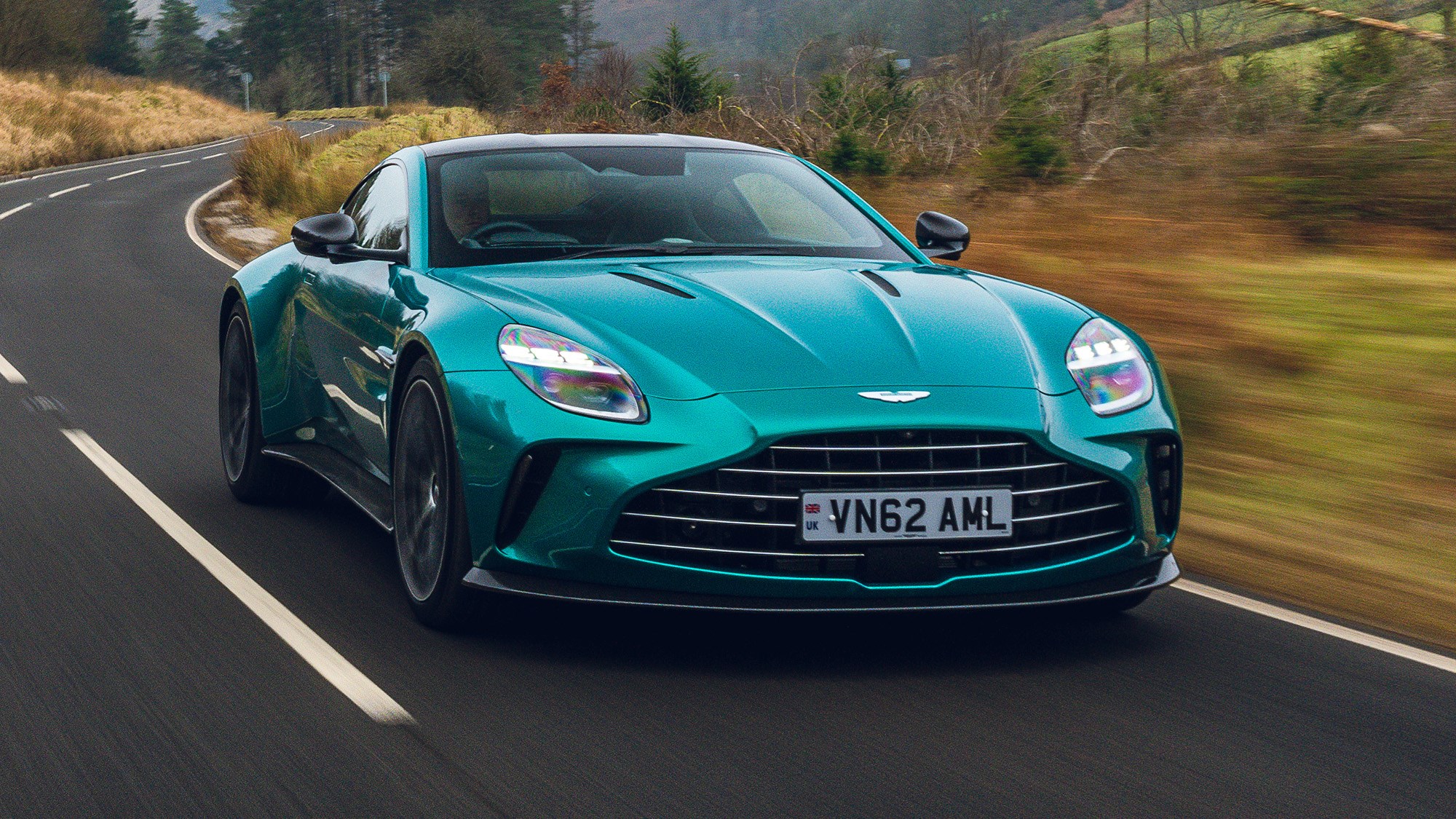
New chief engineer Simon Newton – ex Lotus, Bentley and Faraday Future – joined in the twilight of ex-CEO Tobias Moers’ short tenure. He acknowledges the tumult of that era but credits Moers for streamlining production (now both DB12 and Vantage can flow down the same line at Gaydon) and securing key hardware, the new Vantage’s bespoke Michelin Pilot Sport 5S tyres and Bilstein DTX dampers included.
For the last two years he’s focused on making everything best-in-class. ‘We wanted to amplify this front-engined, rear-drive characteristic that’s classic Aston,’ he sums up. ‘Not only with the numbers but the rest of the capability to go with that.’
What are the specs?
The Mercedes-AMG 4.0-litre twin-turbo V8 gains new camshafts, cylinder heads and lower-inertia turbochargers, and even the block has a new part number. Power ratchets up 30 per cent to 656bhp, torque 15 per cent to 590lb ft, while ‘time to torque’ – the lag between throttle tip-in and response – is 20 per cent swifter. (The wildly powerful, 697bhp DBX 707 SUV also shows how much scope there is for more focused versions.)
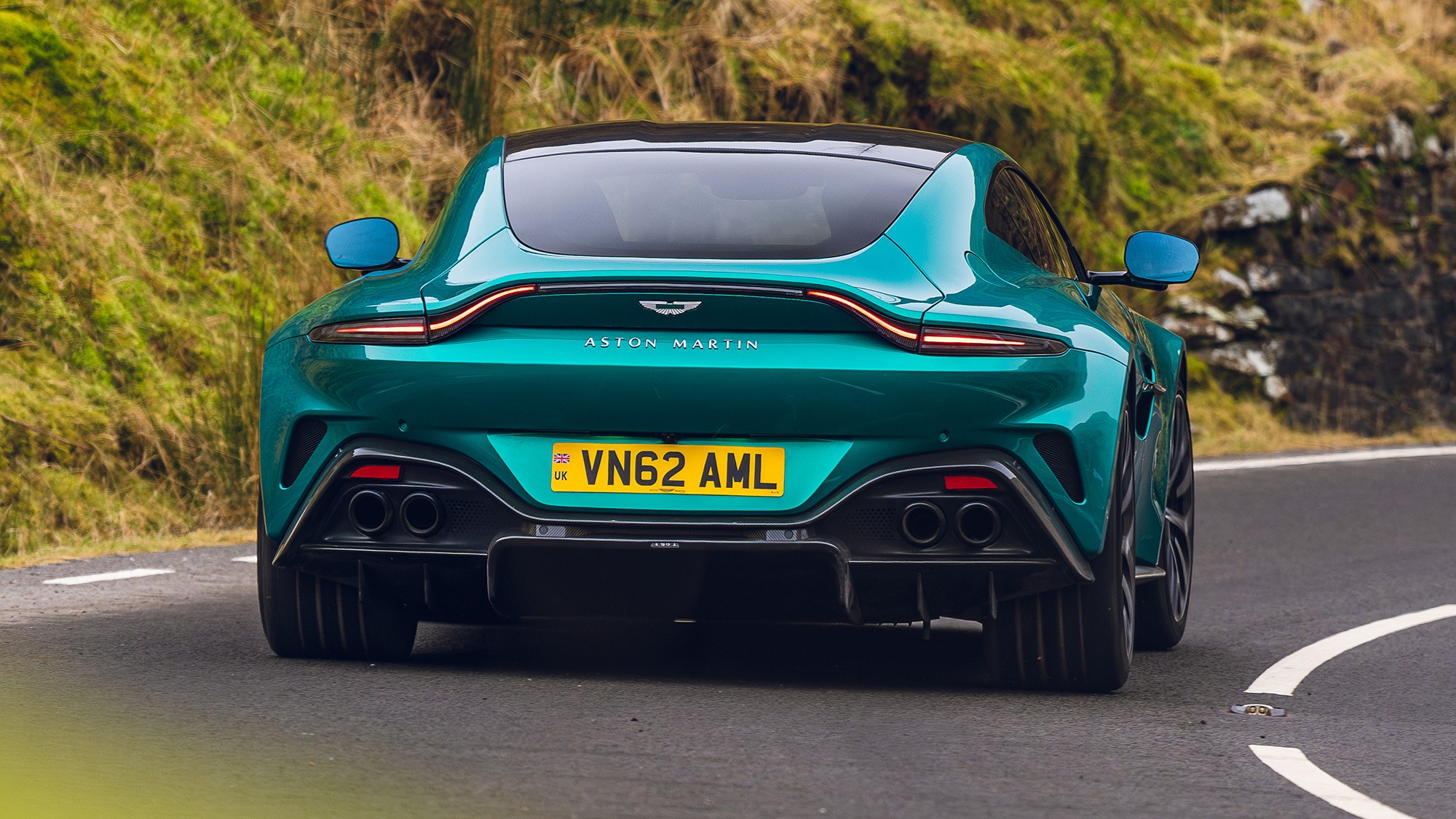
A ZF auto transaxle retains identical gear spacing between its eight ratios, but the hydraulics are punchier and the final-drive ratio seven per cent lower, so it chews through those ratios more rapidly. Zero to 62mph’s gone in 3.5 seconds, while 202mph flat-out is 2mph beyond even the V12 Vantage that featured in the final version of the pre-facelift car.
Keeping all that in check is an evolution of the bonded aluminium platform with seven per cent more torsional rigidity (new shear plates front and rear, braced rear suspension turrets), Michelins to replace the previous Pirellis, while those Bilstein DTXs are said to have 500 per cent more bandwidth of force distribution and a knack for letting wheel travel and body control co-exist.
Crucially, new chassis control software knits everything together more seamlessly, pre-empting rather than merely reacting, tweaking the e-diff, dampers and a new nine-stage traction-control system.
What about the interior?
We were surprised by just how much impact the interior upgrades have had upon sinking into its comfortable, supportively bolstered seats for the firs time, even knowing how weak the old car was inside.
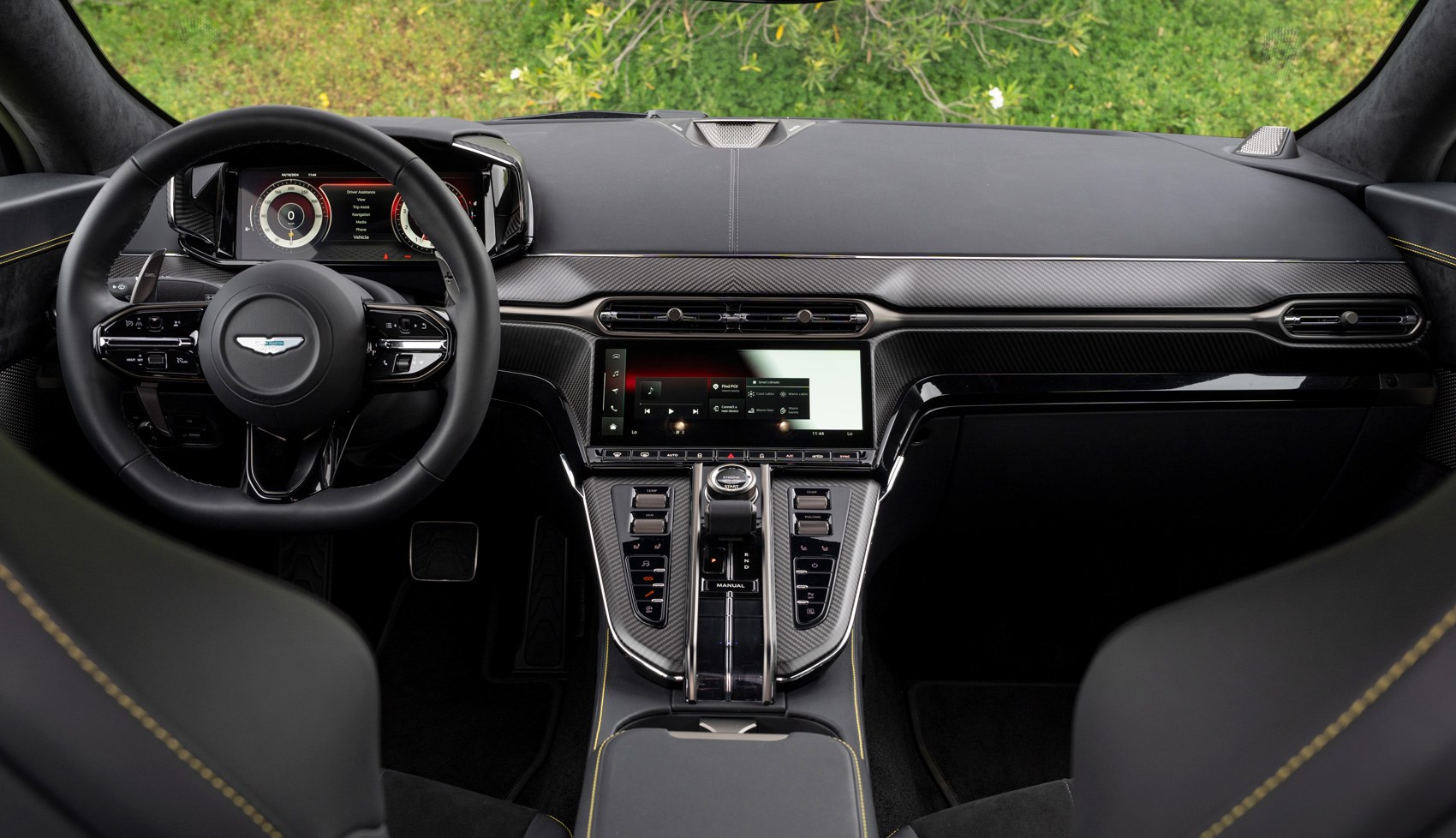
Like the DB12, there’s a new steering wheel with capacitive switches (and now with paddles fixed to the wheel, not the column), and a new centre console with more of the same, but also machined rollers for the functions you want to feel out, and twin 10.25-inch infotainment screens running Linux software. No longer must Aston make do with Mercedes-Benz hand-me-downs, and the system is common across all its new-era cars – the vast R&D spend required insists on that.
It makes the Vantage feel a much more credible alternative to the default not-front-engined German sports car – not to mention the new AMG GT and Ferrari Roma that swim in these waters.
Some black marks go to the architecture – it’s wide at over two metres, extremities are hard to pinpoint, the A-pillars and mirrors create blind spots – and the cabin changes throw up some unexpected downsides. In this brilliant sunshine our optional Bowers & Wilkins speaker grilles reflect sunlight excessively (no problem for UK buyers, then…), we kept accidentally turning on my heated seats by brushing the capacitive buttons while adjusting fan speed, and the gear selection indicator typeface should be much larger.
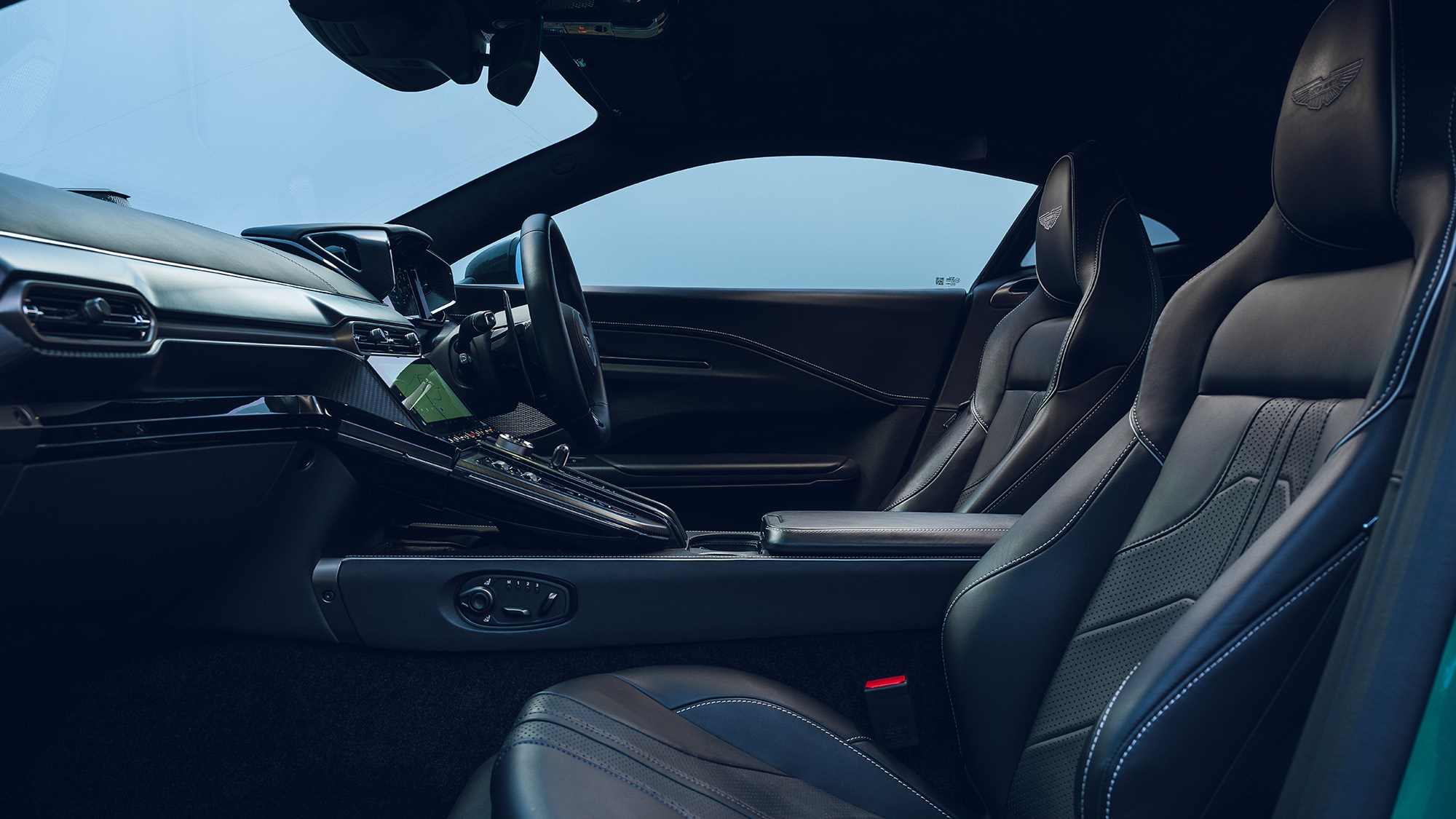
Ultimately, though, the infotainment and switchgear refresh is the big step forward the Vantage so desperately needed. Apparently it was owners’ single biggest beef with the previous-generation car, and we can totally empathise.
What’s it like to drive?
We ease in using default Sport mode (the previous Sport, Sport Plus and Track modes are now book-ended by Wet and Individual modes) and the Vantage builds a serene sort of speed, with no delay to steering inputs. Just response, clarity and nice fluid weighting as it glides into the apex. Earlier, Newton had called it ‘clean’. Spot on.
More road-surface communication would be welcome, but we could feel the surplus of front-end purchase as it settles into these fast corners with unerring stability, its wider track, uprated dampers and stiffer body teaming up to give a calm sort of confidence.
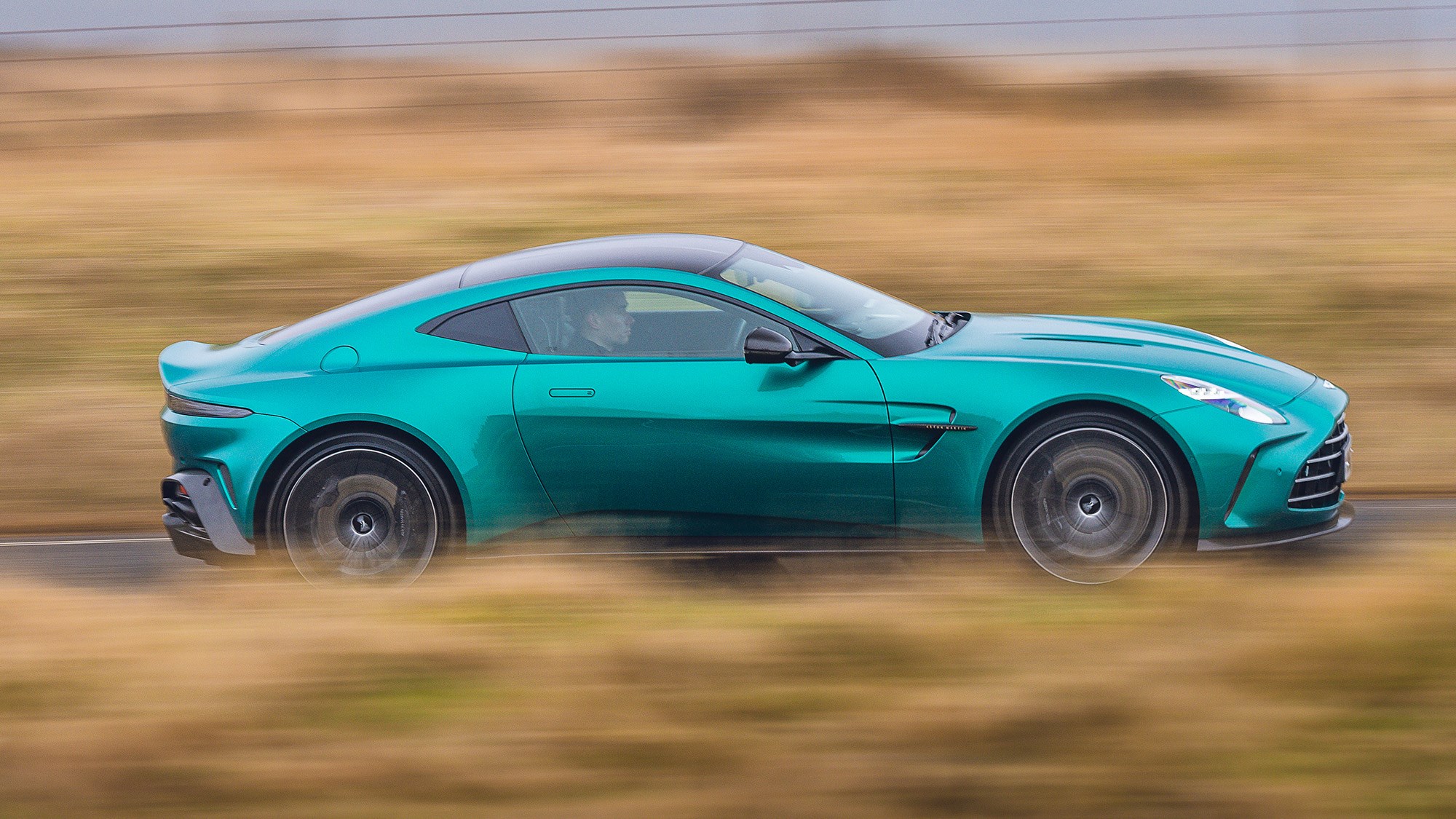
On British motorways it supported a generally relaxed mood – 29mpg achieved after a 160-mile slog – but it’s when we switched to Sport Plus that everything clicked. Most obviously with extra roll support, but also a little more steering weight and a fizzier powertrain calibration including gunpowder tossed in the exhausts on the over-run (and what sounds like a pop coming through the speakers to make gearshifts feel more direct). Now everything was in focus.
Whatever the mode, the Vantage is always fast, its robust torque whooshing us from low rpm and into a full-bodied delivery that persists right through to the 6000rpm-plus delightful high notes. It’s stout more than fizzy, but that suits this car just fine. Same for the gearshifts, which strike a decent balance between speed, connection and refinement.
On downhill sections of our route, our optional carbon-ceramic stoppers are just mighty, with nice feel and strong stopping power that endures, but also a conspicuous lack of dive under heavy braking, those new Bilsteins no doubt playing a role along with the 50:50 weight distribution.
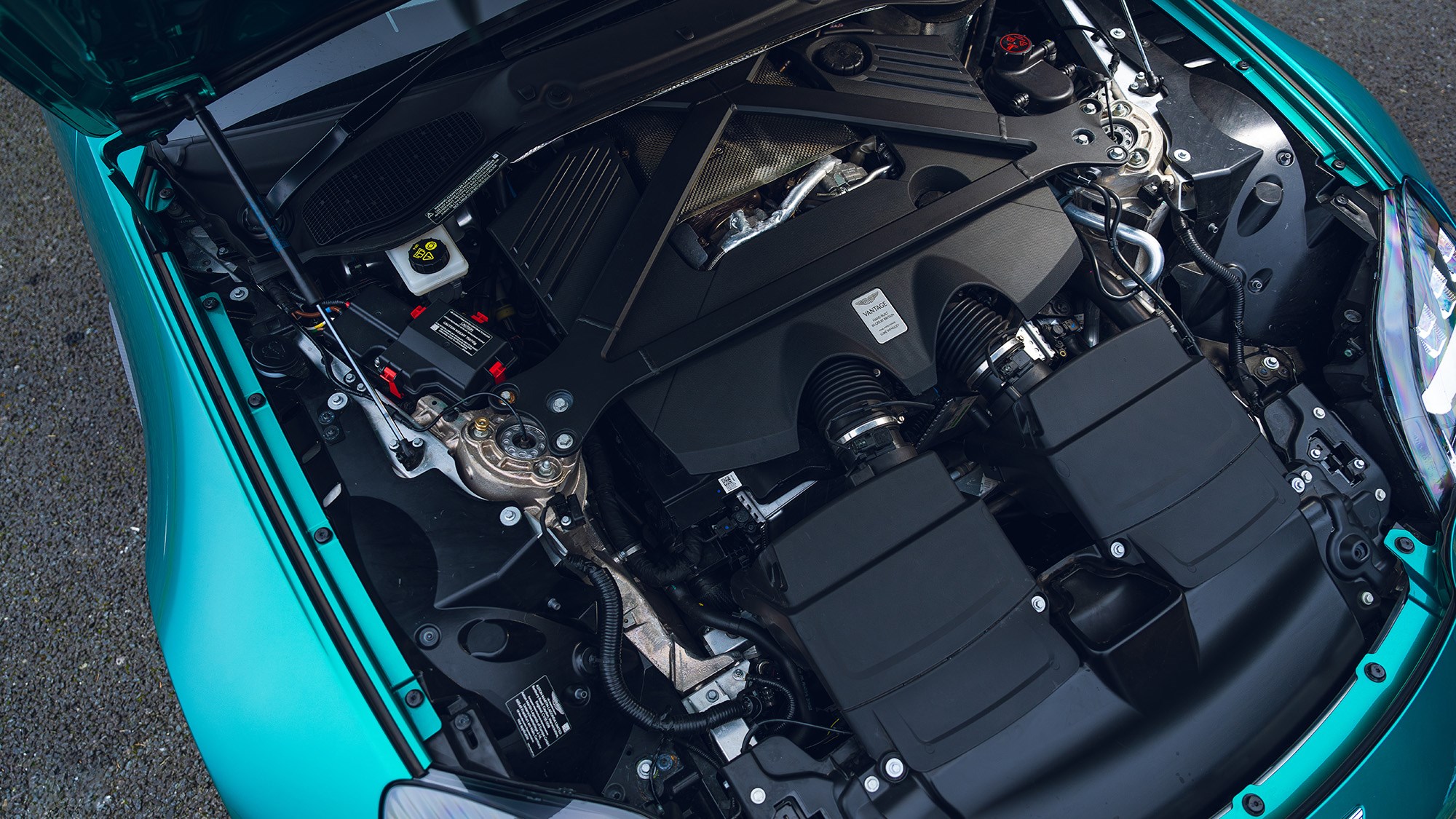
Attacking in the dry, the 325-section rear Michelins dig in hard before relinquishing grip with a nice progressive bleed into oversteer if you force the issue – the multi-stage traction control is a fantastic way to ease into that.
Shame the Vantage doesn’t translate quite so well to the track. It can be a lot of fun in a rowdy, oversteery sort of way, there’s huge performance and the (optional carbon-ceramic) brakes to exploit it. But it feels every kilo of its 1.7 tonnes or so and much of the time we felt like we were either over-driving or conversely backing off and not driving swiftly enough.
In low-speed corners the gearbox is reluctant to drop cogs in a way you just don’t notice on the road, the front struggles to key in and there’s a sense of squidge and heft that it never quite shakes. Through a fast cresting left-hander, the Vantage slips into a hula-hoop kind of motion, as though rebound damping on the rear axle also is too stiff. We short-shifted from fourth to fifth to calm it down.
We can’t ever recall seeing a Vantage on a trackday – but Aston does draw parallels with its new GT3 racer as a ‘brother in speed’, and if we’re to get the inevitable more focused versions, they’ll need to make significant steps forward for track use.
Before you buy
The subtext with the Vantage is ‘no batteries included’ at a moment when the upcoming not-front-engined Porsche 911 is poised to go hybrid, but given today’s appetite for last-of-the-line specials, that might matter very little.
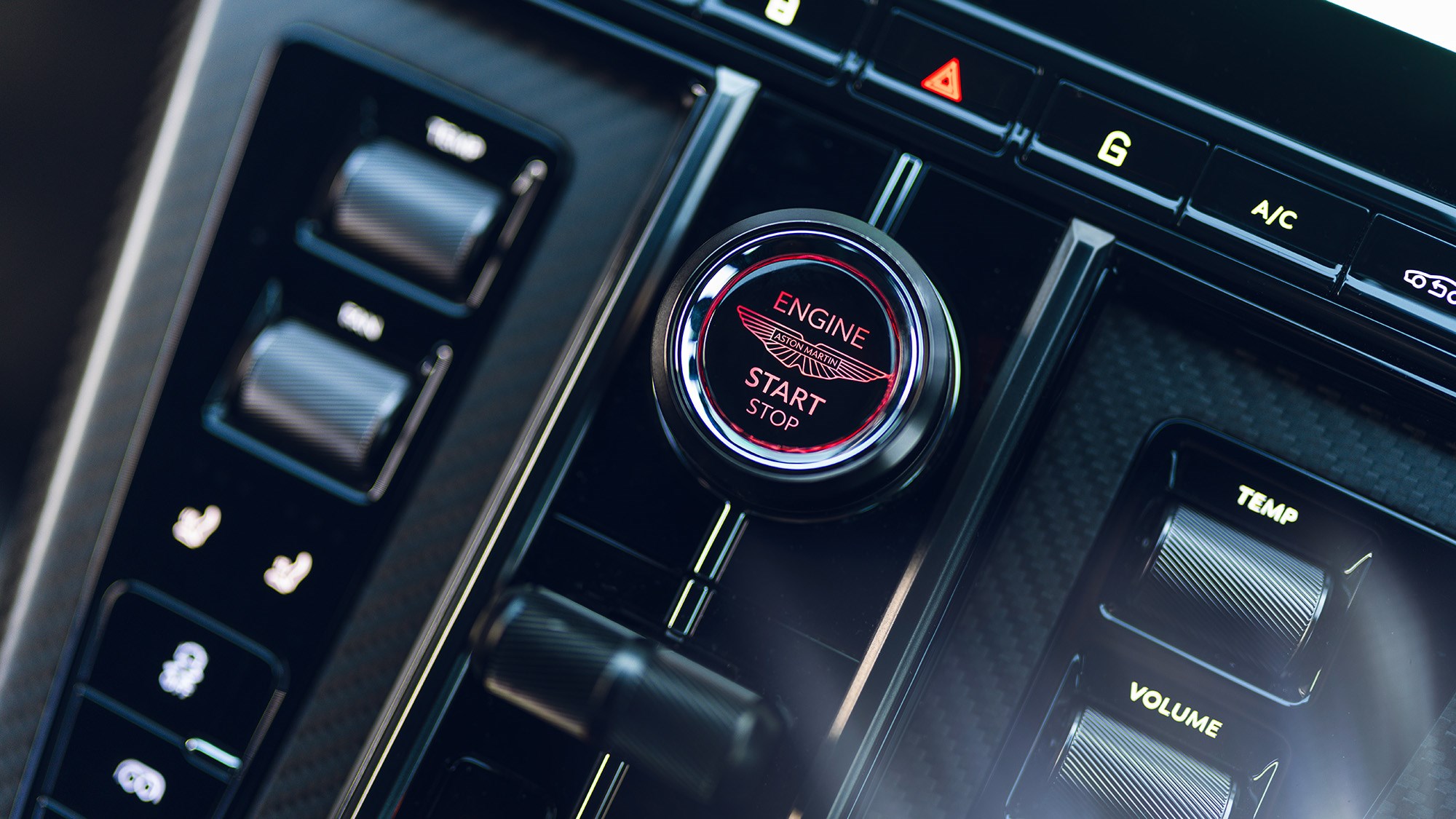
Naturally, the Vantage will always be compared to the 911 as its natural rival, but those in the market for such a machine will surely also be looking at the likes of the AMG GT63. Mercedes-AMG’s (and the only version of the new GT available in the UK) non-PHEV V8 model is a two-door, front-engined, rear-wheel drive sports car for similar money, after all. Ditto Ferrari’s gorgeous Roma.
Verdict: Aston Martin Vantage
This car has character (we did not say flaws) and class that the more clinical 911 Turbo rival can’t match. But as a head-turner to slip through cities and ace the kind of roads I’d seek out for fun, we love it. All we need now is a UK B-road and that new Porsche 911. Never mind the track, that’ll be the true litmus test.